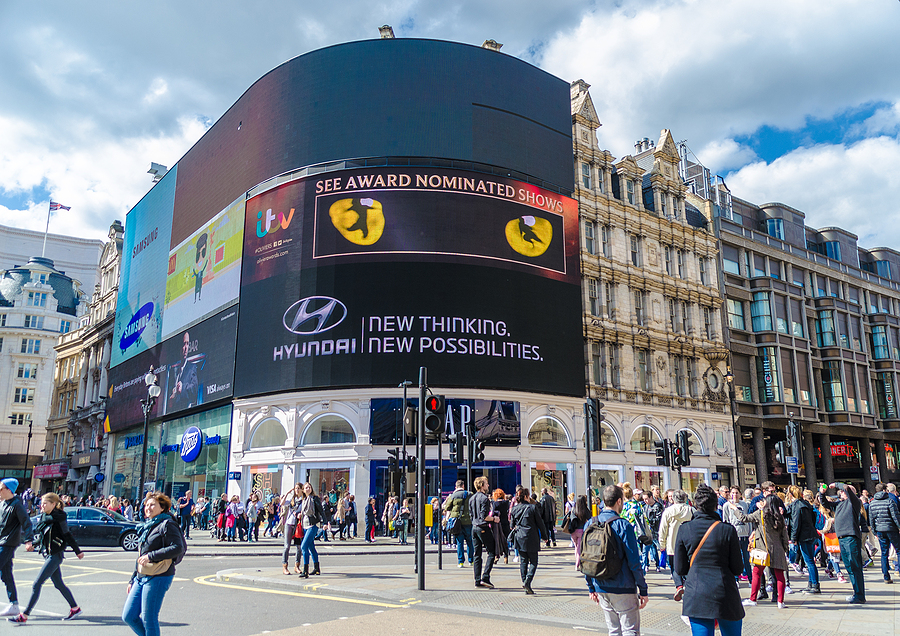There is more to the curved screen wraps in London’s Piccadilly Circus than meets the eye. The giant digital billboards that adorn buildings in the famous hotspot are the largest in Europe, made up of 11 million pixels. However, this is not all: they also employ recognition technology to display targeted ads.
The high-res screens have cameras hidden behind them, which can track the make, model, and colour of passing vehicles. When a certain type of car passes the screen, a targeted ad is triggered. It can also ‘guesstimate’ the age and gender of passers-by, and alter content according to the weather, sporting events and current affairs.
The site is prime advertising territory, as an estimated 100 million people pass through the intersection each year. Some of the world’s biggest brands, such as Hyundai, L’Oréal, and Coca-Cola have featured on the huge 17.5m x 44.6m led screens over the last few years. The screen can be divided up, or used to display a mega-ad the size of three tennis courts.
The makers of the technology told Dezeen magazine: “The new screen technology includes visual sensors that can detect certain elements of the surrounding area, with the potential to then adapt the content in response to it.”
They added: “Although the Piccadilly Lights screen will be able to display advertising content that responds to real-time factors – such as the weather or the colour of cars – the technology is not able to recognise individual people or display individually targeted content.”
Wired Magazine reports that some form of illuminated billboards have been a part of the area since 1908. The very first brand to advertise was the bottled water company, Perrier. The billboards were updated with digital screens in 1998. Visitors to Piccadilly Circus now enjoy free wi-fi, and since 2017, the screens have been able to stream live events.

